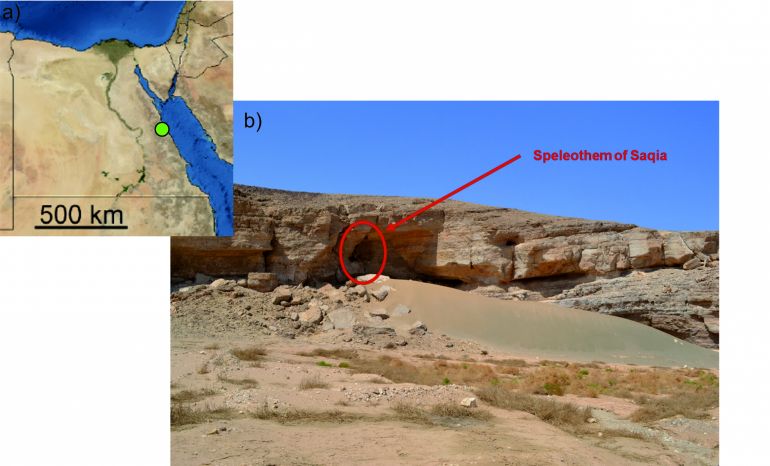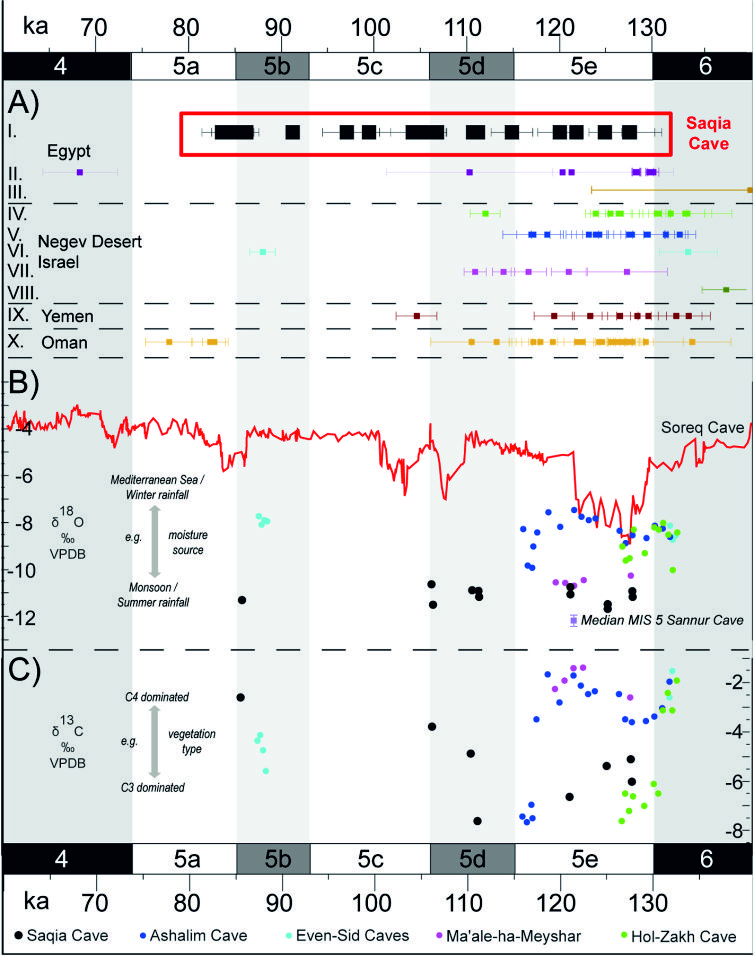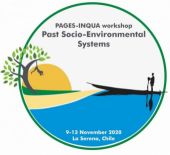The Spotlight #3
Posted by Francesca Ferrario in ECR News on 17 Jan 2022
The Quaternary International paper highlighted today brings us to Egypt, where Felix Henselowsky used cave speloethems to reconstruct humidity patterns between ca. 80 and 200 thousand years before present (MIS 5-6). The paper, entitled “Speleothem growth phases in the central Eastern Desert of Egypt reveal enhanced humidity throughout MIS 5”, can be found here.
The research
Speleothem deposits are important climate archives, because while growing they may record environmental evolution over long time scales. Uranium-series dating are realized on a speleothem from Saqia Cave, Egypt.
Speleothem deposition in hyper-arid environments takes places if sufficient water and vegetation growth are present, otherwise speleothem growth is absent. At Saqia Cave speleothem growth points to climate conditions wetter than the current ones; in fact, no such growth occurs todays.

Figure 1: a) location of the study area, Google Earth imagery; b) field picture of the site.
A total of 21 samples from three cores were dated between ca. 185 and 83 ka BP, revealing a complex speleothem internal structure and growth axis. The identification of growing pulses is linked to carbonate deposition following enhanced precipitation, vegetation growth and soil CO2 production. The isotope composition reveals indeed information on moisture sources. Data from Saqia Cave were compared to other study sites in the Saharo-Arabian Desert, to identify regional trends (Figure 2).

Figure 2: Speleothem growth (a), oxygen and carbon isotope composition (b-c); data from Saqia Cave are compared to other sites in the Saharo-Arabian Desert.
Why should we care?
Northeast Africa provides the only terrestrial dispersal route for humans from the African continent into Eurasia. This land route crosses the nowadays hyper-arid Saharo-Arabian Desert (SAD). Therefore, a better understanding of palaeoenvironmental changes and the identification of formerly wetter climate phases with more favorable ecological conditions provides clues to decipher human occupations and migrations. The research conducted at Saqia cave provides one of the first speleothem record in the region, thus enlarging the number of available climate records.
The results allow to propose a geographic rainfall gradient during the last interglacial in Egypt, with wetter conditions in the east and a more arid climate to the west, respectively. Such situation generated favorable conditions for an enhanced land use and the persistence of a stable corridor, connecting the East African tropical regime to the temperate zones in NE Africa and Eurasia.
The Author
Felix Henselowsky has a PostDoc position at the Institute of Geography at the Johannes Gutenberg University, Mainz (Germany). Previously, he was a PhD student at the University of Cologne and a postdoc at Heidelberg University. His research interests are focused in the field of human-environment interactions with regional foci being the geoarchaeology of arid regions and (historic) anthropogenic relief changes in central Europe.
The paper presented is part of his dissertation within the framework of the Collaborative Research center 806 "Our Way to Europe", (https://www.sfb806.uni-koeln.de/) funded by the German Research Foundation. The results were presented at the INQUA congress in Dublin 2019.
Post written by Francesca Ferrario, Terpro ECR Representative.




